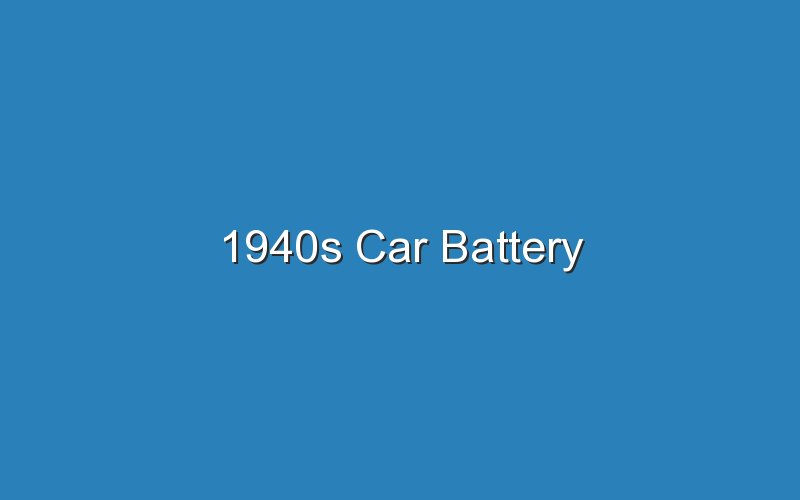A 1940s car battery was the first wet cell battery. A wet cell battery consists of six cells. The plates are made of lead alloy grid and are filled with sponge lead dioxide. The electrolyte is a sulfuric acid solution. In the beginning, the batteries used filler caps for each cell, allowing the user to see the level of the electrolyte and add water. The filler cap also contained a small hole that allowed hydrogen gas to escape during charging.
Today, batteries are usually composed of six galvanic cells in series circuit. Each cell provides 2.1 volts. As the cells are charged, electrons are released from the negative terminal and absorbed from the positive terminal. This process creates an electrical current. The batteries contain lead sulfate, which reacts with the materials on the plates. When charged, the acid reforms into lead dioxide. It is important to know what to look for in a battery before buying one for your car.
In order to identify the type of battery you’re looking for, you should look at the size of its plates. The size of the plates may vary slightly, but overall, they should all be the same, and should be at least half an inch in diameter. Then, you can choose from a wide variety of different capacities. If you’re looking for a large capacity, you should opt for a deep cycle battery. This will have higher capacity than a normal battery and will last longer.
The primary wear-out mechanism in a battery is the shedding of the active material from the battery plates. This shedding happens when the electrolyte is not sufficient, and it forms sludge on the plates and creates an electric short. Adding plastic separator bags to a battery will help prevent sludge buildup and make it more durable. This sludge is largely made of lead sulfate.
A wet cell battery is made up of six cells. A typical automobile battery has six cells. Each cell contains sponge lead dioxide. The electrolyte is a sulfuric acid solution. A wet cell battery is a wet cell. The electrolyte in a wet cell battery is made of sulfuric acid. A wet cell battery is the most common type of rechargeable battery. It has six plates and is commonly found in automobiles.
A wet cell battery is similar to a car battery. It is composed of six separate cells. Each cell is made of two or more lead oxide plates and two sponge leads. The electrolyte is a solution of lead and sulfuric acid. The chemical inside the battery is sulfuric acid, which is an acid. The sulfuric acid in a wet cell battery is a conductive material. A wet cell battery is made of four or more plates, which are called electrodes.
A wet cell battery is similar to a modern automobile battery. It has six separate cells, and each cell contains lead oxide or sponge lead. The electrolyte in a wet cell battery is a sulfuric acid solution. The electrolyte is made of sulfur. A wet cell is also known as a “wet” battery. The voltage of a wet cell is measured in volts, which is what makes it a wet cell.
The primary wear-out mechanism of a battery is the shedding of active material from the plate. It accumulates at the bottom of a cell and can short-circuit the plates. A battery can be repaired or replaced by replacing the plates. The manufacturer of a 1940 car battery should be able to help you with the process. The manufacturer should be able to help you with the selection process. This will ensure that the car battery is safe.
The primary wear-out mechanism of a battery is the shedding of the active material from its plates. When a car is parked, the battery loses electricity and is dead. A 1940 car battery is a good candidate for a restoration. The metal of the battery is still quite corrosive, so it should be maintained and checked by a professional. A high-quality cell will last a lifetime. Its capacity depends on the voltage of the alternator.

